Photo by wyliepoon.
A couple months ago I attended a talk hosted by Janine Marchessault on the Leona Drive project, which is a collaboration between The Public Access Collective and L.O.T. : Experiments in Urban Research (Collective).
Justin mentioned the Leona Drive Project back in 2009, but for a refresher: The Leona Drive project commissioned artist projects for a site specific exhibition in a series of six vacant bungalows slated for demolition by HYATT HOMES, a developer in Willowdale, Ontario (in the Yonge and Finch area of the GTA). The artists worked with a variety of media: audio, cell phones with GPS, architectural installation, projection, photography, sculpture and performance for a period of two weeks in the fall of 2009.
Janine Marchessault is busy. She’s the director of the Visible City Project + Archive, which is examining new practices of media art in a variety of urban contexts. She is also a co-investigator on the Future Cinema Lab, a state-of-the-art digital media research facility devoted to ‘new stories for new screens.’ She’s also a Canada Research Chair in Art, Digital Media and Globalization, investigating how the information society is redefining the artist’s role and shaping urban contexts, with the ultimate goal of proposing new planning and policy strategies.
Over the course of her talk, Marchessault explained how she has become more and more fascinated with the image of Toronto as more than just the city, attempting to paint a more complex picture of the various mixed urban/suburban spaces that surround the famous city of Toronto. Since, Willowdale (the community where Leona Drive sits) was not at first considered a suburb, there needs to be a complexity of terms to describe the space and community dynamics.
Marchessault then went on to describe the origins of the project, starting with the collaborative effort with the L.O.T. (League Of Tangents) group which consisted of 12 grad students who set out to study a community in development, the Leona Drive region. They would all go on walks to get connected to the community and each other, since, as Marchessault puts it, “You can’t have a site-specific show without getting the community involved.” The team then invited 25 artists to imagine the past and present to draw attention to the neighbourhood that was quickly being transformed into another “gentrified” region in the GTA.
The team also wanted to confront and engage with the “anonymous history” connected to these CMHC (Canada Mortgage and Housing Corporation) developements, which began to pop up all over Canada to provide adequate housing to the returning soldiers after World War II.
The results of the research and project were fascinating. There were large scale installations, like the Arbour Lake Sghool‘s backyard project, to the transformative process of An Te Liu‘s Monopoly house, or the quieter work of Anna Friz which uses transistor radios to suggest the presence of past residence. All of the projects worked together in a very successful way to cause an array of complex engagements with a neighbourhood with a rich and complex history, like so many others around Canada, which are slowly (or quickly) disappearing due to “development.”
An Te Liu – Liu’s architectural intervention transforms 19 Leona Drive into an oversized, green, Monopoly board game house.
Photo by kaeko. Transistor radio from Anna Friz’s installation.
Photo by kaeko. A “tree fort” in Arbour Lake Sghool’s backyard installations.
It was an excellent talk, the idea of the project provides some interesting possibilities here in Windsor and Detroit — not an exact carbon copy of the project on something like Indian Road, but maybe the research process looking into all of the conditions and realities that have led to the development process we’re surrounded by.
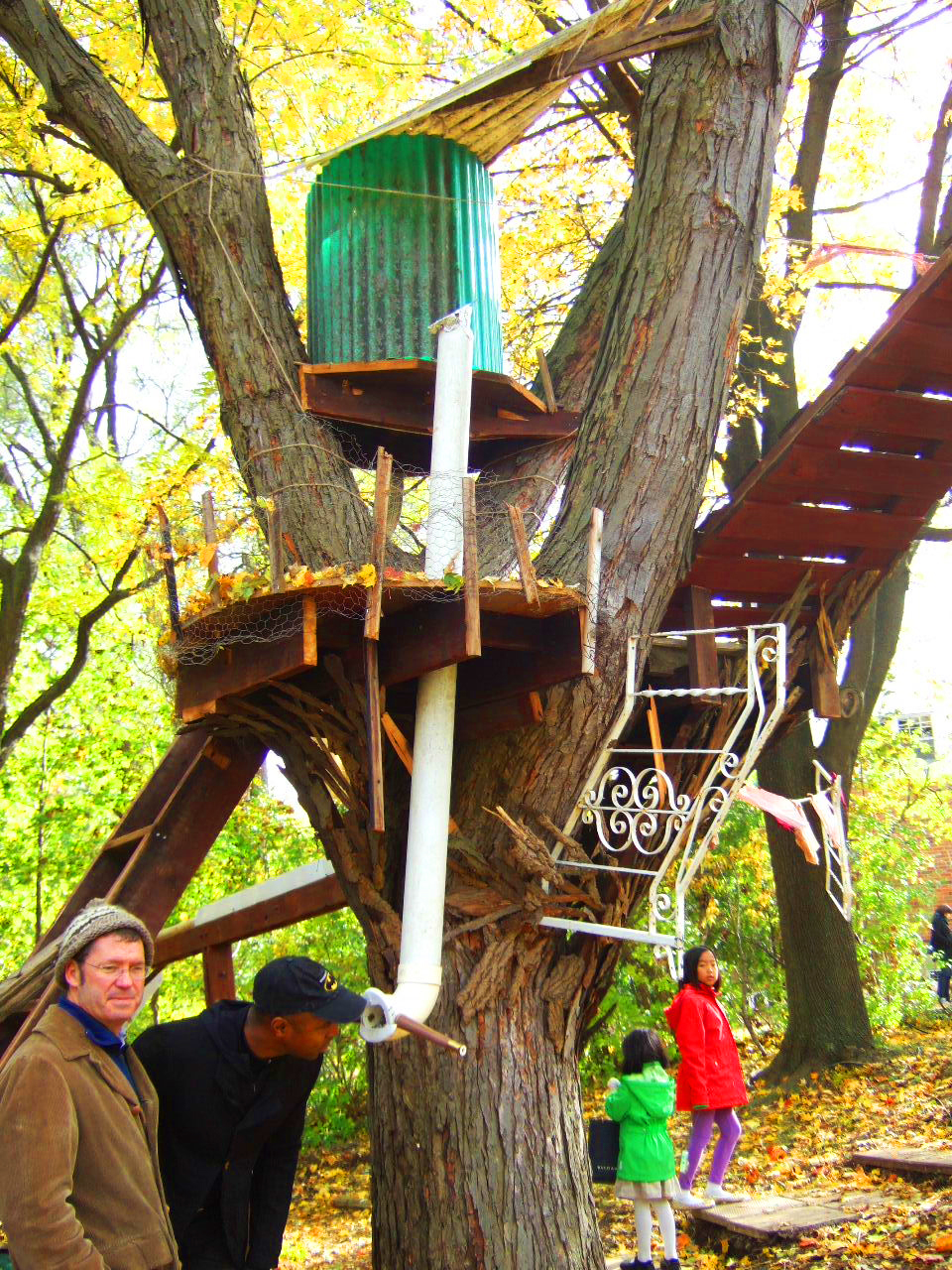
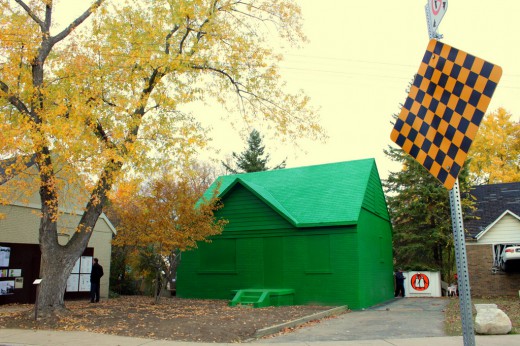
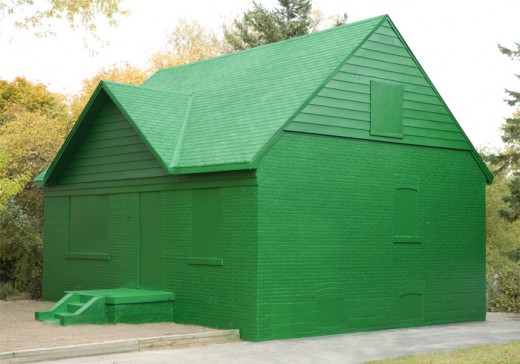
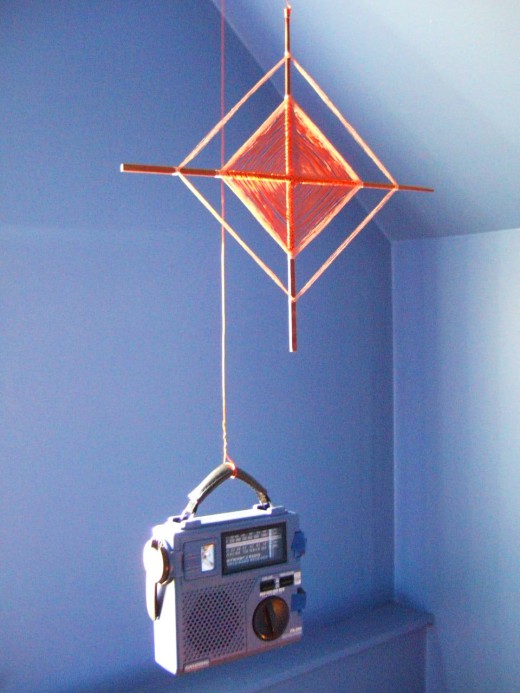
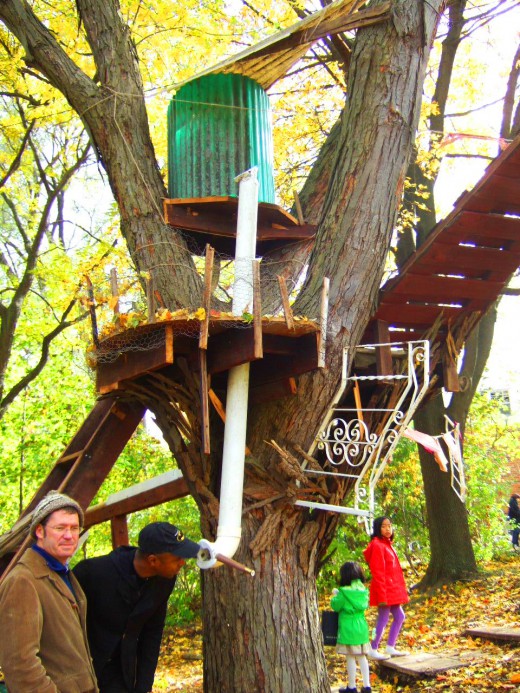
Marchessault was a professor of mine in the 90s when she was at McGill – she was a great prof. Her recent work sounds just as great.
Really wished I hadn’t had to miss this lecture … I’m curious about the details of the CMHC side of the project. Was that a research goal, or was it actually taken up in some of the projects?
Yes Justin,
I found some of the most complex and interesting projects referred to the dense histories of the the specific CMHC housing developments in this community and throughout Canada in a larger sense.
First, you can click this link http://www.leonadrive.ca/LDP_Brochure.pdf to see the map of the site and the locations of each artist’s works.
Several artists did works relating to the history of an individual house or the entire neighbour hood.